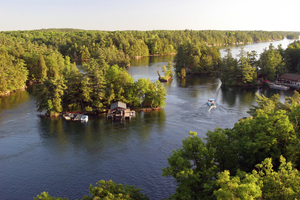A few years ago I was the keynote at an event that had the word "outdoors" in the title. Somehow I pictured it being a weekend full of people like me. People who loved to be outside because of the quiet. But the majority of attendees seemed to be athletes who loved outdoor recreation. They liked to be outside to hike, bike, canoe, run, and play sports or any other group activity. They were loud, full-hearted and fun. And they tired me out. It took me a while to figure this out. "Oh, they like the outdoors because it's challenging." They might end up tapping into their soul along the way, but that's not the main point.
One day we signed up for a mountain hike. We gathered in the parking lot to join our large, happy, rowdy group. Everyone started discussing carpool options, and there weren't enough seats. I said, "Anyone just want to go on a smaller walk, here at camp?" A few people (quietly) raised their hands. Then one person offered, "I know the trail to a heron rookery we could visit." We were pulled in her direction like magnets.
The rookery was amazing, ancient, powerful. A breathing, spiritual place. I can still see our eyes brimming with tears when we first caught sight of it the opening in the forest. I can see the still water, the nests high in the trees, the herons bringing twigs back to their mates, the soft blue sky. And I can still see the others we were with, moving slowly, communicating in whispers and hand signals. It was a rare sight. It could have been passed by. It took someone who knew the place to take us. To open our eyes and respectfully witness a process of life that has been going on there in that spot for a long, long time. Just to experience it restored some part of me. And just to know it is there today fills me up in the same way, and quiets me inside.
This was awhile ago, and today, I'm not sure which hike I'd choose to be honest. It would all depend on what I needed most. I'm more of an athlete now myself, and these days I have come to realize how much I need strenuous activity on a regular basis to feel really good, AND how I still need time in nature for quiet connection. I "use" the outdoors for physical activity and for inner reflection. Both provide me with a sense of balance and well-being. And that's the point.
Sometimes people don't even realize that places can restore their soul. They're too busy doing other things. In my sense-of-place work and research I have seen that there are many reasons people visit places, and many reasons we protect and steward places – for recreation, for social activities, for scenic or ecological reasons, as well as for mental, emotional and spiritual well-being.
I believe their are easy, yet powerful ways to connect people with nature for its restorative value. And I don't mean just for the few, the bird-watchers, poets and photographers. Everyone can benefit from quiet time in nature – solo, or with a group of people who know how to speak in whispers, and recognize true magic when they see it.
June Sense of Place Tips
1) Plan a saunter, as Henry David Thoreau called them. A word which he explained in his essay "Walking" as "beautifully derived ‘from idle people who roved about the country, in the Middle Ages, and asked charity, under pretense of going a la SainteTerre,’ to the Holy Land, till the children exclaimed, ‘There goes a Sainte-Terrer,’ a Saunterer, a Holy-Lander."
2) Take note of what you notice. Your ideas could be the start of a great song, poem, or story. The book "Wild" by Cheryl Strayed was an Oprah Book Club Pick and a bestseller. The story is based on the author’s solo journey on the Pacific Crest Trail. Hers was a recreational adventure with a goal in mind. But what she gained in the end was her soul.
3) View this TED talk by Susan Cain, author of the NYT bestseller book "Quiet: The Power of Introverts in a World that Can't Stop Talking." (I picked this book up in Bar Harbor last summer while I was on faculty for an all-ages family nature camp. I wonder why I was so drawn to it…) View here http://www.ted.com/talks/susan_cain_the_power_of_introverts
4) Can you recall a time you took the opportunity to just spend quiet time outside without a certain goal or activity in mind? How would you describe it? In what way did it nourish your soul?
April 2014/Quick: What is That Song?



















